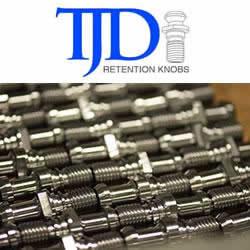NEMA and Allied Associations Release Tariff Incentive Proposal To Strengthen Trump Administration’s U.S. Energy and Manufacturing Goals
Electrical equipment and grid components are the backbone of America’s energy, manufacturing, grid, and AI dominance priorities. To power growing demand for electricity, industrial capacity, and data centers, more of this infrastructure must be produced here at home.
ARLINGTON, Va. — The National Electrical Manufacturers Association (NEMA), together with associations representing data center owners and operators and the broader electrical industry, today released a tariff incentive proposal to accelerate the Trump Administration's energy and domestic manufacturing priorities.
Electrical equipment and grid components are the backbone of America's energy, manufacturing, grid, and AI dominance priorities. To power growing demand for electricity, industrial capacity, and data centers, more of this infrastructure must be produced here at home.
U.S. manufacturers are doing their part - investing more than $185 billion in the U.S. to increase domestic manufacturing since 2018. That investment could be sidelined, however, without tactical and time-limited tariff incentives that can ensure operational continuity and cost stability for the domestic producers - and consumers - of sophisticated electrical products while they onshore essential supply chains.
"The Trump Administration is right to prioritize domestic manufacturers' roles in meeting our growing energy, industrial production and data center demands," said NEMA President and CEO Debra Phillips. "It takes time for supply chains to move to the U.S. and our tariff framework assures that national manufacturing, energy, grid and AI objectives are pursued at pace to strengthen domestic production, deliver reliable energy, and unbuild essential power infrastructure here at home."
NEMA's tariff incentive framework introduces a three-pronged approach to targeted, time-limited tariff incentives that support the Trump Administration's industrial policy and energy objectives:
• Capital Investment in U.S. Manufacturing Incentive: A tariff offset equal to any capital investments made to build or expand a domestic manufacturing facility, available for up to three years after the facility is operational.
• Grid Infrastructure Incentive: A tariff offset for goods or raw materials used to build or operate our power infrastructure essential to global competitiveness, including but not limited to substations, on-site generation, distribution equipment, and data centers.
• Domestic Manufacturing Incentive: A tariff offset for manufactured goods that meet federal domestic content requirements.
While NEMA projects U.S. energy demand will increase 50% by 2050, U.S. electrical manufacturers have invested more than $10 billion since 2021 in new technologies to expand our grid and manufacturing capacity. They have also reshored their supply chains back to the United States, reducing their reliance on materials from China by 32% since 2018. By rewarding capital investments in U.S. manufacturing capacity and grid infrastructure, providing duty compensations for manufacturers and data center developers investing in U.S. power infrastructure, and providing a bonus to manufacturers whose products comply with domestic content rules, these incentives preserve trade enforcement priorities while strengthening domestic energy and manufacturing supply chains.
"Data center companies are investing hundreds of billions of dollars in the U.S. annually to build the digital infrastructure that drives the 21st-century economy and advances national security," said Data Center Coalition President Josh Levi. "With continued support from the Trump administration in the form of policies to provide tariff certainty, the data center industry can overcome supply chain barriers to faster data center construction, support the continued reshoring of American manufacturing, and help the U.S. win the global AI race."
"The National Electrical Contractors Association (NECA) strongly supports the tariff incentive framework joint initiative. The electrical industry shares a common mission: building and maintaining the safe, reliable, and innovative electrical infrastructure that powers our homes, communities, and economy. By aligning tariff policy with domestic investment and energy priorities, the tariff incentive approach ensures that we reward companies making capital investments in U.S. facilities, incentivize the use of domestic content, and support essential grid and AI infrastructure development," said NECA CEO David Long. "These offsets will not only strengthen our industrial base but also help ensure electrical contractors can deliver projects on time and on budget—benefiting communities, businesses, and workers alike. NECA looks forward to working with NEMA, the Data Center Coalition and all related partners on this issue, and we stand ready to work together to implement policies that makes us the global leader in energy, manufacturing, and innovation."
"The National Association of Electrical Distributors (NAED) applauds NEMA's innovative approach to incentivizing domestic manufacturing and grid expansion," said NAED President and CEO Wes Smith. "Electrical distributors have long supplied the equipment that makes data centers work. With sound policy like NEMA's tariff incentive proposal, we can continue to ensure an uninterrupted supply of the material that not only powers data centers, but is also at the heart of delivering the plentiful and reliable energy every American expects every day."
"Supporting initiatives that drive America's electrification, this proposal presents a thoughtful and practical approach to realigning U.S. trade policy with national priorities in energy independence, domestic manufacturing, and AI infrastructure, said National Electrical Manufacturers Representatives Association (NEMRA) President and CEO James Johnson. By incentivizing capital investment in American facilities and advancing grid and AI infrastructure development, the framework directly supports the interests of the independent manufacturers' representatives we serve—who are vital connectors in the electrical ecosystem. We encourage the Administration to adopt this strategic solution to foster economic growth, project stability, and long-term competitiveness in a rapidly evolving global market".
We urge the Administration to double down on its stated manufacturing and AI priorities so that American industry can unleash the full potential of our electrified economy. To read NEMA's tariff incentive proposal, click here.
###
About NEMA
The National Electrical Manufacturers Association (NEMA) represents over 300 electrical equipment and medical imaging manufacturers that make safe, reliable, and efficient products and systems. Together, our members contribute 1% of U.S. GDP and directly provide nearly 580,000 American jobs, contributing more than $330 billion to the U.S. economy. Learn more at makeitelectric.org
Featured Product

